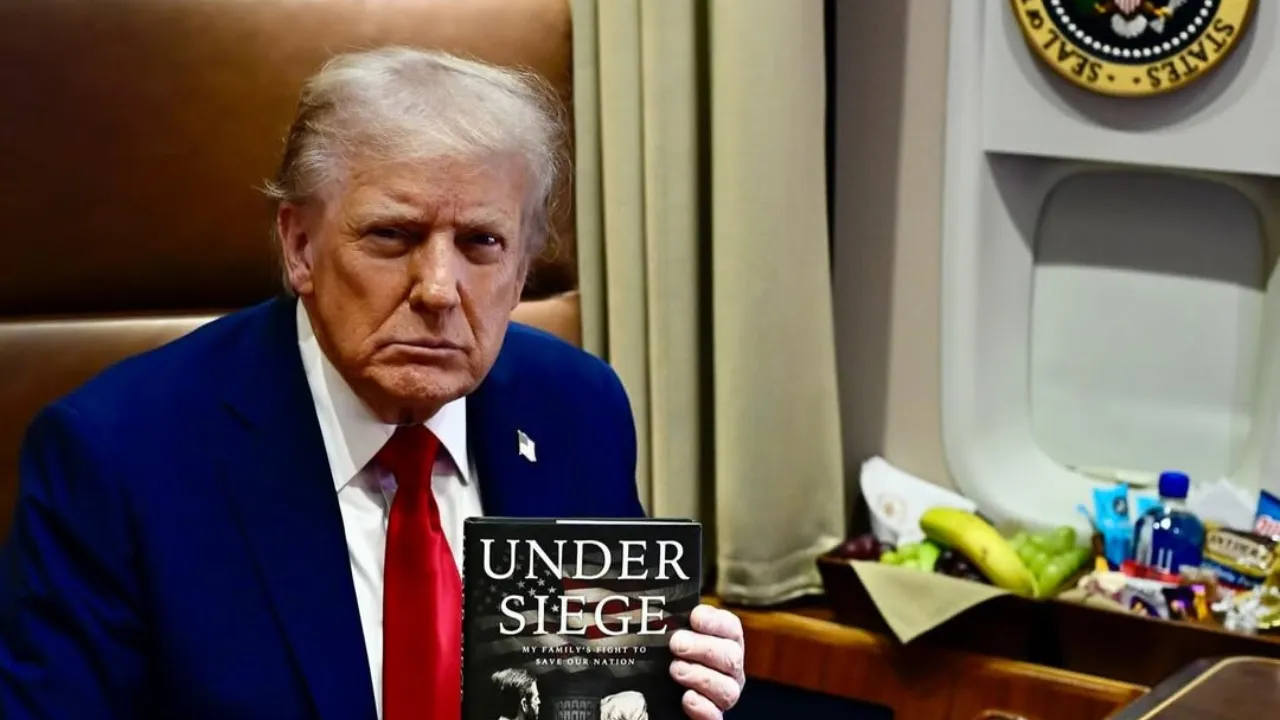Donald Trump says Afghan-Pakistan clash would be “an easy one” to solve — what he meant and why it matters
US President Donald Trump made headlines again after commenting on the ongoing Afghanistan–Pakistan border clashes, calling them “an easy one” to solve. His remarks, made on October 17–18, 2025, drew global attention as tensions between Islamabad and Kabul continued to escalate. The statement came as both nations agreed to a temporary ceasefire following several days of heavy cross-border shelling.
What Donald Trump actually said
During an interaction with reporters, Donald Trump stated, “I do understand that Pakistan attacked, or there is an attack going on with Afghanistan — that’s an easy one for me to solve, if I have to solve it.” The line immediately spread across global media platforms. Trump presented himself as someone capable of resolving international conflicts with minimal effort, referencing previous claims of peace-brokering success in other regions.
The remark, however, was not backed by any specific diplomatic initiative from Washington. It reflected Trump’s characteristic mix of confidence and ambiguity — acknowledging the issue while suggesting he could step in if needed. His choice of words, “if I have to,” implied he was waiting for an invitation or necessity before taking action.
The situation on the ground
In mid-October 2025, fierce fighting broke out along the Afghanistan–Pakistan border. Reports indicated exchanges of gunfire, artillery shelling, and airstrikes, leading to civilian and military casualties on both sides. The clashes prompted both governments to issue strong statements defending their positions.
After days of violence, officials from Islamabad and Kabul agreed to a short-term ceasefire aimed at calming the situation. International partners, including Saudi Arabia and Qatar, supported mediation efforts, while global organizations called for restraint and dialogue.
Despite the ceasefire, the underlying tension remained. The border region, marked by the disputed Durand Line, has long been a flashpoint for hostility. Historic disagreements over territorial boundaries and alleged cross-border militancy continue to fuel mistrust.
Why Trump’s statement oversimplifies the issue
While Donald Trump’s claim that the conflict would be “easy” to solve gained attention, the reality is far more complex. The Afghanistan–Pakistan relationship is strained by decades of unresolved border disputes, political instability, and competing national interests.
First, both sides have deep-rooted security concerns. Pakistan accuses Afghanistan of harboring groups that target its border regions, while Afghanistan blames Pakistan for providing support to insurgents operating on its soil. These mutual accusations make cooperation difficult.
Second, internal politics play a major role. The Taliban-led Afghan administration must maintain domestic legitimacy, while Pakistan’s military and civilian leadership juggle public opinion and geopolitical calculations. A sudden compromise could appear as weakness, which both governments want to avoid.
Finally, multiple regional powers — including China, India, Iran, and Saudi Arabia — have vested interests in South Asia. Their involvement complicates the possibility of a simple bilateral solution.
The role of diplomacy
Even though Donald Trump framed the conflict as an “easy one,” experts argue that any real resolution would require long-term diplomacy and trust-building measures. The United States, under Trump’s leadership, could theoretically play a stabilizing role through mediation, but only if both parties agree to external involvement.
Realistic diplomatic steps might include setting up neutral observation teams along the border, creating communication channels for crisis management, and supporting humanitarian aid to affected civilians. These measures would reduce immediate tensions and open the door for dialogue.
However, such initiatives require sustained effort, not one-off interventions. Past experiences show that quick political fixes rarely result in lasting peace. The Afghan-Pak border issue, in particular, demands patient, multilateral engagement — something far beyond the reach of a single speech or declaration.
Why Trump made the comment
Political analysts suggest Donald Trump’s statement serves multiple purposes. Domestically, it helps him project strength and reinforce his reputation as a decisive global leader ahead of election season. Internationally, it reasserts U.S. influence in a region increasingly dominated by China’s strategic initiatives and Russia’s regional diplomacy.
By positioning himself as a problem-solver, Trump also aims to remind both allies and rivals of America’s global relevance. His past presidency included direct meetings with North Korea’s Kim Jong Un and public claims of fostering Middle East peace deals. The new comment fits that familiar narrative of self-confidence and global authority.
However, critics warn that such rhetoric can also backfire. Oversimplifying deep-rooted conflicts may create unrealistic expectations. If no actual progress follows, it could further damage Washington’s credibility as a reliable mediator.
What to watch next
Observers are now monitoring whether any formal U.S. diplomatic initiative follows Trump’s words. Thus far, no official statement has been issued by the State Department outlining plans to mediate between Islamabad and Kabul.
Meanwhile, regional diplomacy continues. Pakistan’s foreign ministry has reiterated its call for restraint, while Afghan officials maintain that their country reserves the right to defend its sovereignty. Humanitarian organizations are pressing for longer ceasefires to allow aid delivery and prevent civilian displacement.
If Trump’s offer evolves into a tangible mediation plan, it could mark a significant moment for U.S. involvement in South Asia’s security architecture. But if the statement remains rhetorical, it will likely fade as another instance of Trump’s bold but unfulfilled promises.
Interpreting the headlines
When evaluating Trump’s remarks, it’s essential to look beyond viral headlines. His statements often blend political branding with foreign policy posturing. While Donald Trump’s confidence resonates with his supporters, the Afghan-Pakistan conflict is a deeply complex issue shaped by history, ideology, and power politics.
The best indicator of progress will be concrete action — diplomatic envoys, bilateral meetings, or multinational peace initiatives. Until then, Trump’s claim of an “easy” fix should be seen as political messaging rather than a realistic solution.
Conclusion
Donald Trump’s comment on the Afghanistan–Pakistan border crisis once again demonstrates his instinct for commanding global attention. By calling it “an easy one to solve,” he positioned himself as a decisive problem-solver in contrast to traditional diplomats. Yet the situation on the ground tells a different story — one of history, politics, and persistent tension that cannot be resolved overnight.
As both nations navigate fragile ceasefires and international pressure, real peace will depend on careful negotiation, patience, and mutual understanding. For now, Trump’s words may have sparked a global debate, but the world is waiting to see if they translate into real diplomatic action or remain another headline in his long list of bold declarations.

















